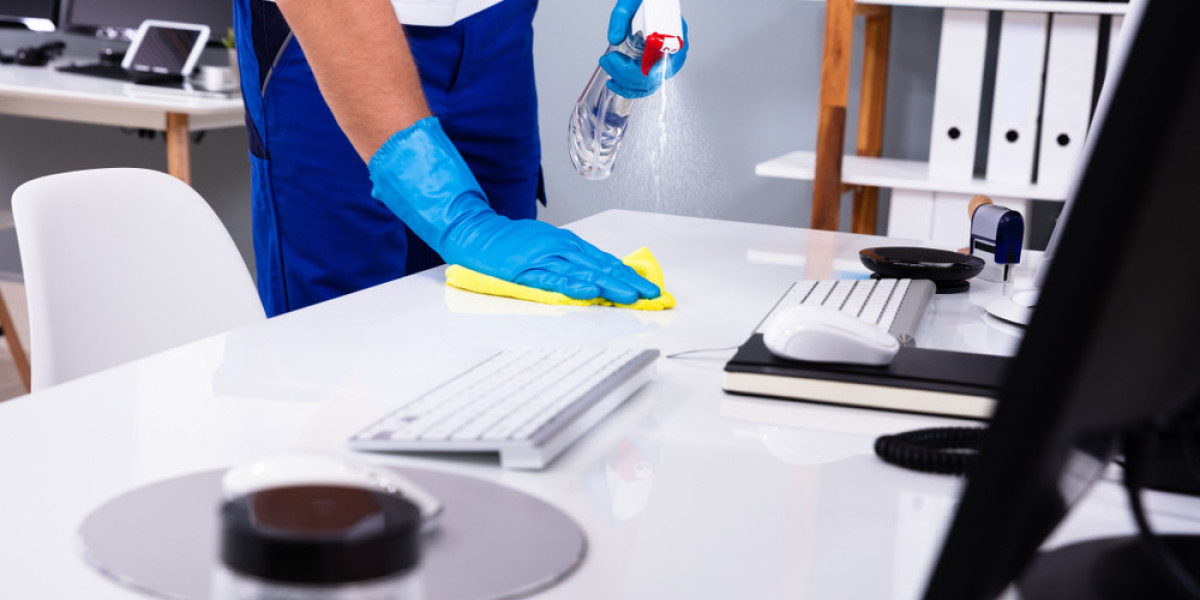Offices are busy environments where employees share desks, devices, and common spaces daily. Over time, dust, bacteria, and clutter silently accumulate, creating an environment that can affect productivity and employee well-being. Many companies focus only on surface-level tidiness, overlooking the need for a complete office deep cleaning routine that ensures true hygiene and lasting freshness.
Office deep cleaning goes beyond the daily wipe-down. It involves systematic sanitation, disinfection, and organization of every area from workstations to air vents. When done right, it reduces illness-causing germs, improves air quality, and leaves a positive impression on visitors and staff alike.
This guide walks you through everything you need to know about office deep cleaning from understanding its importance and crafting a smart cleaning schedule, to learning step-by-step procedures and actionable commercial cleaning tips for maintaining workspace hygiene year-round.
Why Deep Cleaning Your Office Matters
A clean workspace isn’t just about appearances; it’s about health, safety, and morale. Regular deep cleaning minimizes allergens, eliminates germs, and extends the lifespan of office furniture and fixtures. Neglecting this routine can lead to recurring illnesses, unpleasant odors, and even equipment damage caused by dust buildup.
Partnering with professional services like Meticulosity Cleaning ensures every cleaning task meets the highest hygiene standards while your team focuses on what they do best growing your business.
In modern workplaces, cleanliness directly impacts productivity. Studies show employees perform better in sanitized environments because they feel more comfortable, focused, and valued. That’s why corporate sanitation, the structured practice of maintaining hygiene across work areas is now an essential part of business management.
Step-by-Step Office Deep Cleaning Checklist
Deep cleaning requires a systematic plan. Here’s a detailed process you can implement weekly, monthly, or quarterly.
Declutter Workstations
Start by organizing desks and removing unnecessary items. Encourage staff to store personal belongings neatly and recycle old papers or supplies. A clutter-free space makes disinfecting surfaces much easier and more effective.
Dust and Wipe Surfaces
Use microfiber cloths and gentle cleaning agents to remove dust from desks, shelves, blinds, and electronics. Don’t forget ceiling fans, vents, and light fixtures. Consistent dusting improves air circulation and minimizes allergy risks.
Disinfect High-Touch Areas
Keyboards, door handles, elevator buttons, and phones harbor thousands of germs. Use EPA-approved disinfectants to eliminate bacteria and viruses.
Definition: Disinfecting office means using specialized solutions to destroy harmful microorganisms on surfaces to ensure a hygienic workspace.
Clean Carpets and Floors
Vacuum all carpets thoroughly and mop hard floors using appropriate cleaning agents. Professional steam cleaning once a month helps eliminate deep-seated dirt and odors, improving air freshness and office appearance.
Sanitize Restrooms and Break Areas
These areas are hotspots for germs. Clean sinks, counters, and microwaves daily, while deep scrubbing floors and restocking supplies weekly. A clean break room promotes healthier eating habits and reduces cross-contamination.
Check Air Vents and Filters
Clean air filters ensure better ventilation and reduce dust recirculation. Have HVAC systems inspected regularly as part of your deep cleaning schedule a planned timetable for routine sanitation and periodic deep clean tasks.
Office Deep Cleaning Schedule: Daily, Weekly, and Monthly Tasks
Frequency | Key Tasks | Purpose |
Daily | Empty trash, wipe desks, disinfect door handles, tidy shared areas | Maintain workspace hygiene and reduce germ spread |
Weekly | Vacuum carpets, mop floors, clean restrooms, disinfect break areas | Prevent buildup of bacteria and dust |
Monthly | Deep clean upholstery, sanitize vents, polish furniture, steam carpets | Preserve long-term cleanliness and indoor air quality |
Pro Tip: Assign cleaning duties using a rotation schedule or checklist to ensure accountability. Even small, consistent actions make a huge difference in maintaining cleanliness.
Professional Cleaning vs. In-House Maintenance
While in-house janitorial teams handle daily tidying, professional janitorial services bring specialized tools and disinfectants for thorough sanitation. Professionals know how to clean delicate electronics, reach hidden spots, and eliminate pathogens safely.
For example, a tech firm in Roseville saw a 40% drop in sick leave after adopting quarterly professional cleanings. This demonstrates how expert intervention can directly enhance employee health and productivity.
Relying solely on internal staff often leads to overlooked corners or inconsistent results. Outsourcing ensures deep cleaning is methodical, efficient, and fully compliant with safety standards giving your workplace the pristine condition it deserves.
How to Maintain Workspace Hygiene Between Deep Cleanings
Sustaining cleanliness doesn’t stop after a deep clean. Here’s how to keep your office consistently sanitary:
Encourage employees to clean their desks before leaving.
Keep disinfectant wipes and sanitizers accessible in common areas.
Schedule monthly inspections for spills, stains, or maintenance issues.
Educate staff about proper waste disposal and hygiene habits.
Regularly review your cleaning checklist for updates and improvements.
With these small steps, maintaining office safety and hygiene becomes a team effort ensuring a healthier, happier workplace every day.
Frequently Asked Questions (FAQs)
Q1: How often should office deep cleaning be done?
Ideally, a full office deep cleaning should occur every one to three months, depending on team size and foot traffic.
Q2: What’s included in a professional deep cleaning service?
Professional cleaners handle carpets, air vents, restrooms, workstations, and touchpoints, ensuring complete workspace hygiene and sanitization.
Q3: Can janitorial services replace deep cleaning?
No. Regular janitorial services maintain daily cleanliness, while deep cleaning targets long-term sanitation and hidden contaminants.
Q4: Why is disinfecting office surfaces so important?
Routine disinfection prevents the spread of germs and ensures your office safety and overall employee well-being.
Q5: What’s the best way to maintain a deep cleaning schedule?
Use a checklist to track office maintenance tasks weekly and monthly. Consistency is key to lasting hygiene results.
Conclusion
A clean office is a healthy, productive office. By following a structured office deep cleaning plan, businesses can minimize illness risks, boost morale, and create a positive work atmosphere. Regular sanitization, attention to detail, and consistent hygiene checks make all the difference.
Integrating a practical deep cleaning schedule also extends the lifespan of office furnishings and improves overall corporate image. Partnering with professionals like Meticulosity Cleaning ensures thorough, safe, and efficient sanitation helping your workspace stay spotless year-round.







